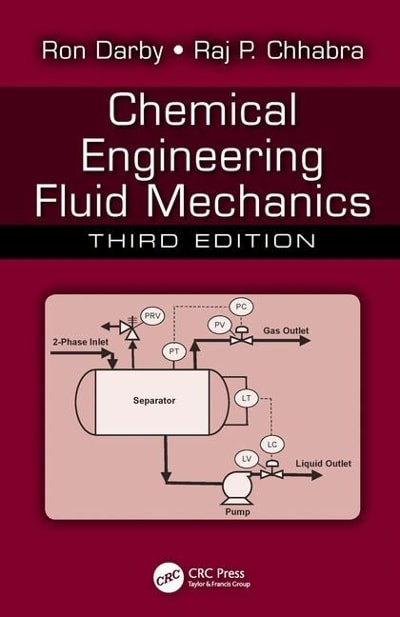When an open tank with a free surface is stirred with an impeller, a vortex will form
Question:
When an open tank with a free surface is stirred with an impeller, a vortex will form around the shaft. It is important to prevent this vortex from reaching the impeller, because entrainment of air in the liquid tends to cause foaming. The shape of the free surface depends upon (among other things) the fluid properties, the speed and size of the impeller, the size of the tank, and the depth of the impeller below the free surface.
(a) Perform a dimensional analysis of this system to determine an appropriate set of dimensionless groups that can be used to describe the system performance. Arrange the groups so that the impeller speed appears in only one group.
(b) In your plant you have a $10 \mathrm{ft}$ diameter tank containing a liquid that is $8 \mathrm{ft}$ deep. The tank is stirred by an impeller that is $6 \mathrm{ft}$ in diameter and is located $1 \mathrm{ft}$ from the tank bottom. The liquid has a viscosity of $100 \mathrm{cP}$ and a specific gravity of 1.5 . You need to know the maximum speed at which the impeller can be rotated without entraining the vortex in the impeller blades. To find this out, you design a laboratory test using a scale model of the impeller that is 8 in. in diameter. What, if any, limitations are there on your freedom to select a fluid for use in the lab test?
(c) Select an appropriate fluid for the lab test and determine how large the tank used in the lab should be and where in the tank the impeller should be located.
(d) The lab impeller is run at such a speed that the vortex just reaches the impeller. What is the relation between this speed and that at which entrainment would occur in the tank in the plant?
Step by Step Answer:

Chemical Engineering Fluid Mechanics
ISBN: 9781498724432
3rd Edition
Authors: Ron Darby, Raj P Chhabra





